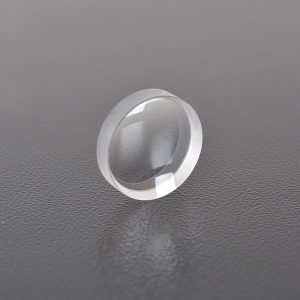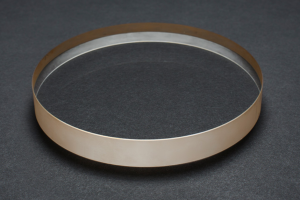
Microscope Lens Factory: the Core of Precision Optical Technology
From nano-level polishing to intelligent coating technology, microscope lenses reshape the microscopic world with extreme precision-the molecular arrangement of each piece of glass is related to whether humans can see the invasion path of viruses or the atomic transition of quantum materials.
The microscope lens factory is an important part of the optical manufacturing field, focusing on the production of high-precision lenses and optical components, which are the core components of optical instruments such as microscopes. As an indispensable tool in scientific research, medical diagnosis, industrial detection and other fields, the performance of microscopes depends largely on the quality of lenses. This article will explore in depth the working principle, manufacturing process and importance of microscope lens factories in modern science and technology.
1. Basic principles of microscope lenses
The main function of microscope lenses is to magnify the details of tiny objects by refracting and focusing light. The quality of the lens directly determines the resolution, clarity and imaging effect of the microscope. Microscopes are usually composed of multiple lenses, including objective lenses, eyepieces and condensers. The objective lens is responsible for the initial magnification of the object, the eyepiece further magnifies the image formed by the objective lens, and the condenser is used to adjust the intensity and uniformity of the light.
2. Manufacturing process of microscope lenses
1. Material selection
The manufacturing of lenses first requires the selection of suitable materials, usually optical glass or special crystals. These materials need to have high transmittance, low dispersion and good mechanical stability. In recent years, with the development of technology, some high-performance plastics have also been used to manufacture lenses, especially in low-cost microscopes.
2. Design and processing
The design of the lens needs to be optimized according to the specific purpose of the microscope. After the design is completed, the raw materials are cut into the preliminary shape of the lens through precision processing technology. This process usually uses CNC machine tools or laser cutting equipment to ensure that the geometry of the lens meets the design requirements.
3. Grinding and polishing
The grinding and polishing of the lens is one of the most critical steps in the manufacturing process. By using abrasives of different particle sizes, the surface of the lens is gradually polished to a smooth surface to ensure its optical performance. The polishing process requires higher precision, usually using diamond polishing fluid to make the lens surface reach nanometer-level flatness.
4. Coating
In order to improve the transmittance of the lens and reduce reflection loss, the lens surface is usually coated with one or more layers of optical film. These films can enhance the transmittance of light of specific wavelengths while reducing the interference of stray light. Coating technologies include physical vapor deposition (PVD) and chemical vapor deposition (CVD).
5. Inspection and calibration
The manufactured lenses need to undergo strict quality inspection, including tests on surface flatness, optical performance and mechanical strength. Inspection equipment usually includes interferometers, spectrophotometers and microscopes. Only lenses that pass the inspection can enter the final assembly link.
III. Technical challenges of microscope lens factories
1. High precision requirements
The manufacture of microscope lenses requires extremely high precision, especially in high-magnification microscopes, where tiny defects in the lenses will lead to a significant decrease in image quality. Therefore, every link in the manufacturing process needs to be strictly controlled to ensure that the geometry and optical performance of the lens meet the design requirements.
2. Complexity of materials and processes
With the expansion of the application field of microscopes, the requirements for lens materials are getting higher and higher. For example, in ultraviolet microscopes, special materials that can transmit ultraviolet light are needed; in electron microscopes, high temperature and radiation resistant materials are needed. The processing and coating processes of these materials are also more complicated.
3. Automation and intelligence
In order to improve production efficiency and product quality, modern microscope lens factories are increasingly adopting automation and intelligent technologies. For example, robots are used to grind and polish lenses, and artificial intelligence technology is used to optimize design and inspection processes. The application of these technologies not only improves production efficiency, but also reduces human errors.
4. Application and future of microscope lens factories
The products of microscope lens factories are widely used in scientific research, medical diagnosis, industrial testing and other fields. In the biomedical field, high-resolution microscope lenses help scientists observe the microstructure of cells and tissues; in materials science, the quality of lenses directly determines the accuracy of microscopic analysis of materials. With the development of cutting-edge technologies such as nanotechnology and quantum computing, the requirements for microscope lenses will also be further improved.
In the future, microscope lens factories will continue to develop in the direction of high precision, high performance and intelligence. The application of new materials and new processes will promote the innovation of lens manufacturing technology, and the introduction of artificial intelligence and big data technology will further improve production efficiency and product quality. As the core of optical manufacturing, microscope lens factories will continue to play an important role in scientific and technological progress.
Conclusion
The microscope lens factory is an important part of precision optical manufacturing, and its products directly determine the performance and application range of microscopes. Through continuous technological innovation and process optimization, the microscope lens factory provides strong support for scientific research, medical diagnosis, industrial testing and other fields. With the advancement of science and technology, the microscope lens factory will continue to lead the development of optical manufacturing technology and provide more precise tools for human exploration of the microscopic world.
Hanzhong Brisun Optics Co., Ltd. Is the high precision optical element manufacturer provides customized production of Various optical lenses, including spherical lens, cylindrical lens, optical window, mirror, prism, filter, metal base mirror and other high-precision optical elements. The base materials include various optical glass, fused quartz, calcium fluoride (CaF2), zinc selenide (ZnSe), germanium (GE), silicon (SI), sapphire, metal and other materials. And provide antireflective film, high reflection film, spectroscopic film, metal film and other optical coatings.
Welcome to OEM and Purchasing!


